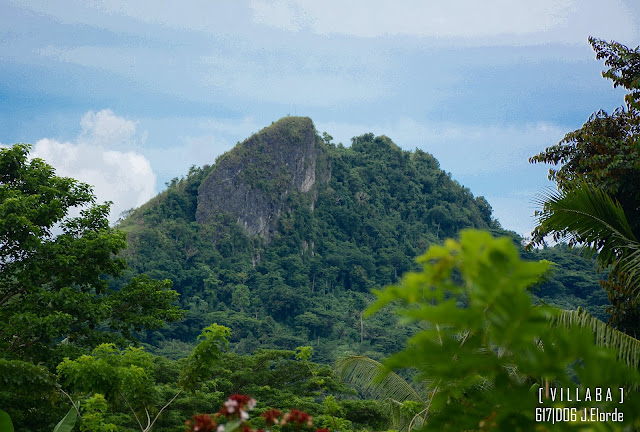Villaba Leyte - A Brief History
The place now known as Villaba was discovered in the late sixteenth century by Boholano traders. These traders landed on the western coast and found fertile plains along the river and in the forest. The coastline also proved to be a good fishing ground. The settlers built their houses along the riverbanks and formed groups to protect themselves from Moro pirates and wild animals. The banks of the river were lined with "Hindang" trees, which grew in abundance, so they named the new settlement Hamindangon, meaning "full of Hindang trees." Over the years, more settlers migrated from Bohol and Cebu, and they too established themselves on the plains along the Hamindangon River.¹
Spanish Period
During the expedition to the entire Eastern Visayas by Spanish conquistador in 1593, a group of Spaniards, led by the General-Governor's son, Luis Pérez Dasmariñas landed on the shores of Hamindangon and the named the place Nueva Galicia in honor of his father, the Governor-General of the Philippines, Gomez Perez Dasmariñas who is from Galicia, Spain.
The governor set sail from Cavite for Pintado province in October 1593, to join the part of the fleet under Luis Pérez who is already at the Visayas. Before he proceeded to Moluccas, his son, Luis Pérez introduced the barrio of Nueva Galicia to the whole fleet. Upon seeing the village and the vast mountainous jungle, the Governor-General declared it into pueblo and renamed the place to Vilalba (from the Spanish town in Galicia region) in order not to confused with other Nueva Galicia town that is located in Mexico.
Over the years, the natives of the barrio had problem of Spanish accented digraphs, mispronouncing Vilalba (Spanish pronunciation: [biˈʎalβa]) with Villaba (IPA: [vɪ'ʎabɐ]), and perhaps, it is easier to pronounce the later name and thus retained it when the town was officially established in June 1910.²😂
American Period
Japanese Period
Mayor Vicente Veloso attempted to organize a guerilla unit to defend the municipality against enemy incursion. However, such attempt did not materialize because he changed his stance after attending a conference in Tacloban sponsored by the Japanese in May 1942 according to Fermin Tumamak, the barrio teniente of Balite, in his interview by the CIC in 1945. For the reason why he did not organize the resistance forces, the researcher had the opportunity to interview the former mayor at his residence in Villaba back in June 1995 where he stated that, “It was the best choice in order to save the residents from the brutality of the Japanese and the guerilla groups.”³
Villaba was heavily involved in the tragic history of the Second World War. As Japanese troops were retreating to flee from the onslaught of the Leyte gulf battle, under the command of General Sosaku Suzuki.-December 19, 1944, General Yamashita informed Japanese commanders
in Leyte that they could no longer expect to received reinforcements and
supplies. General Sosaku Suzuki, commander of the Leyte forces, devised a
scheme to occupy high plateaus southeast of Villaba
-December 25, 1944, Gen. Suzuki and about 10,000 of his troops
concentrated at Mt. Canquipot (now known as Buga-buga Hill) and made it as natural
fortress.
-January 20, 1945, with humors that rescue had docked in Balite
area, Lt. Tomochika and others waited on the beach for a boat that never came
and they were plunged into the depths of despair.
-February 11, 1945, the 96th Filipino Regiments joined
the 164th American Regiments
on their push to the sea south of the hill and killing over 50 Japanese.
-Febraury 16, 1945, they reached the sea at Abijao and immediately
established a perimeter near Pangdan.
-February 17, 1945, some Japanese did succeed in infiltrating its
lines but lost 37 of men
-February 21, 1945, American forces ran into heavy fires from small
mortars and machine guns causing the Japanese to lose 64 men, and the Americans
with 9.
-On the night of 23-24, February 1945, 30 Japanese trying to
infiltrate the perimeter between Company E and G. The fight killed another 5
Japanese and 1 American.
-Evening of March 17, 1945 two Japanese vessels appeared.
-March 18, 1945, around 12:30AM, Gen. Suzuki and some of his troops boarded
the vessels leaving at least 3,000 other troops.
-The remaining troops continued fighting for several days hoping that
they will be rescued but none came. Many of them died from starvation and
illness.
-On the evening of April 26, 1945, the vessel bearing General Suzuki was bombed by American aircraft off the coast of Negros island and Gen. Suzuki was killed.⁴






Comments
Post a Comment